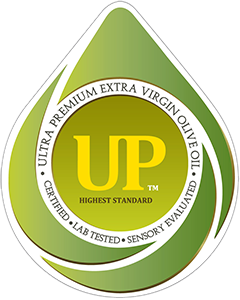Extra Virgin Olive Oil is the default healthy cooking oil these days. No doubt,
you've heard it's good for you, but do you know why or the different kinds? Learn their benefits and when to use them.
Nutrition Info
All oils have about 120 calories and 14 grams of fat per tablespoon. With those high tallies, it's always a good idea
to measure precisely when cooking to avoid sneaking extra calories into your dishes. Olive oil is high in
healthy monounsaturated fatty acids (MUFAs). MUFAs may help lower cholesterol when you swap them for the saturated fat
in your diet (like using olive oil instead of butter). Olives are also rich in antioxidants called polyphenols, plant compounds with cancer-fighting properties.
Types of Olive Oil
Olive oil is commonly available in extra-virgin, virgin and light varieties. Extra-virgin oil comes from the first press of the olives;
it has a low amount of acidity and is typically the most expensive. It has a green color and strong olive flavor, making it best for
dipping bread or drizzling over salad and veggies (more usage tips below). Virgin oil is produced in a similar fashion to extra-virgin
(from pressing already crushed olives) and it’s slightly more acidic.
Extra-virgin and virgin olive oils haven't been refined (oils can be refined -- or "processed" -- by exposure to heat or chemicals).
An oil just labeled “olive oil” may be a blend of refined and virgin oils. Light olive oil is often further refined to remove any color and flavor.
Don’t be fooled by the word “light” -- that refers to flavor and color only, not calories or fat (light olive oil has just as much as the other types).
Storage and Uses
Store olive oil in a cool, dark place, away from direct sunlight or heat (your kitchen cupboard or pantry is
perfect -- as long as it's not directly above the oven). Most olive oils have a shelf life of up to two years from crush date.


